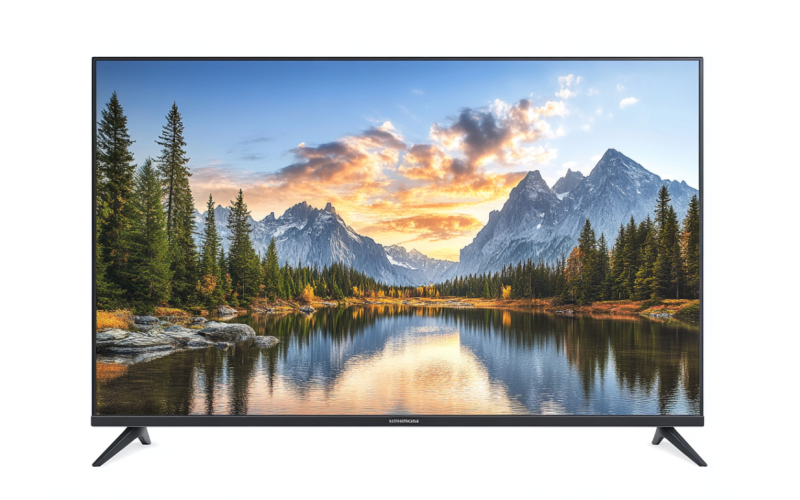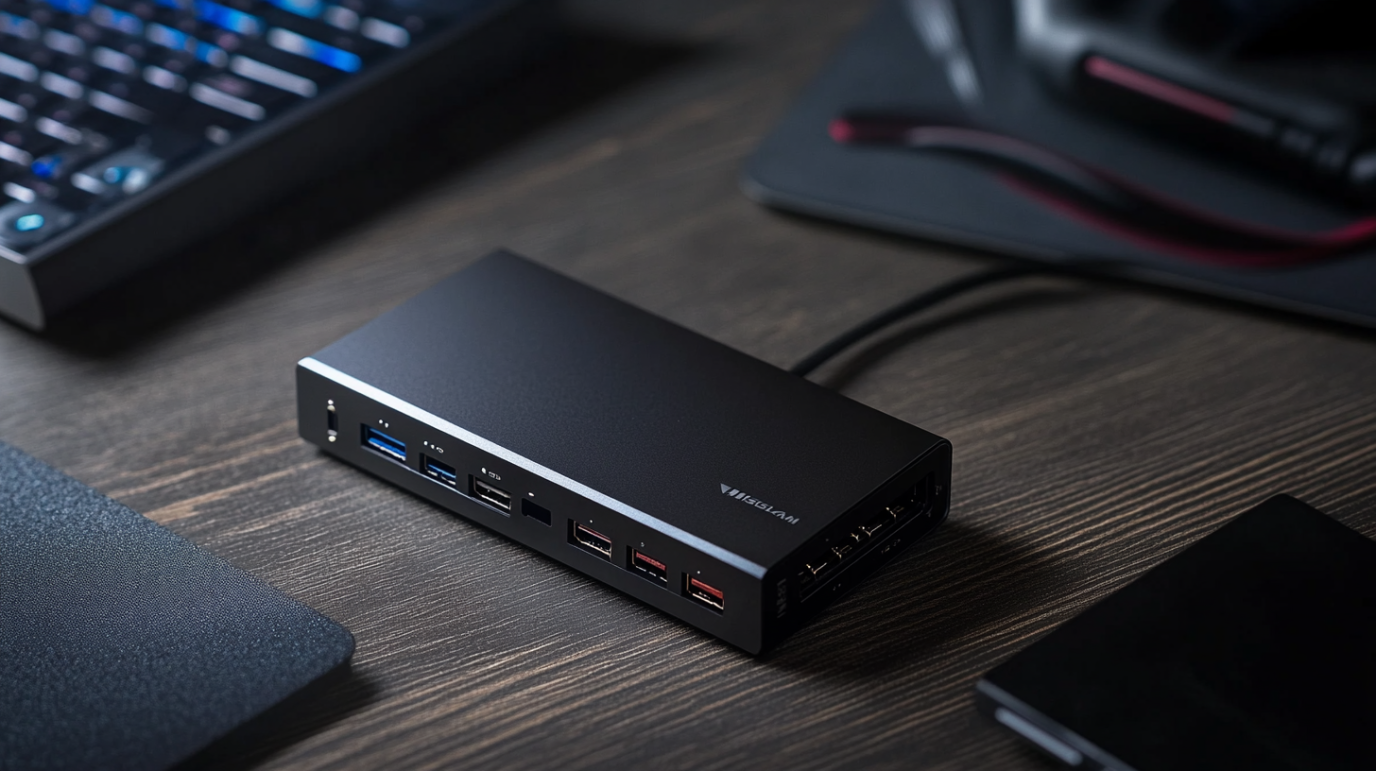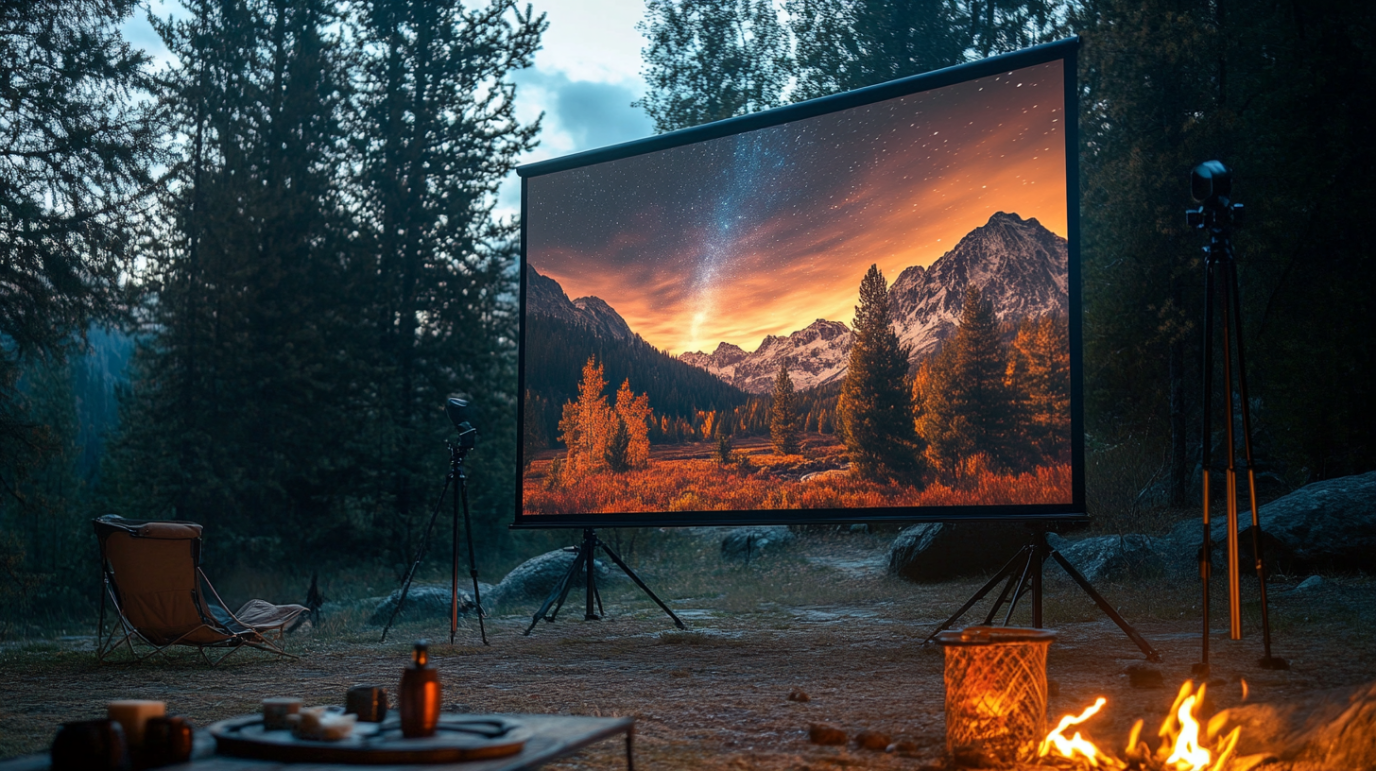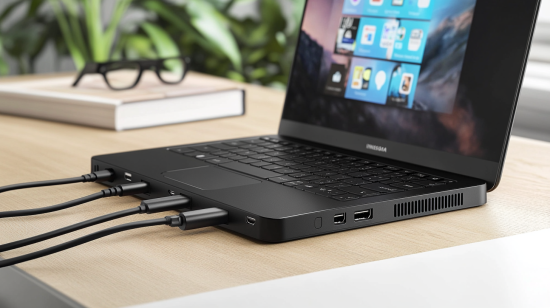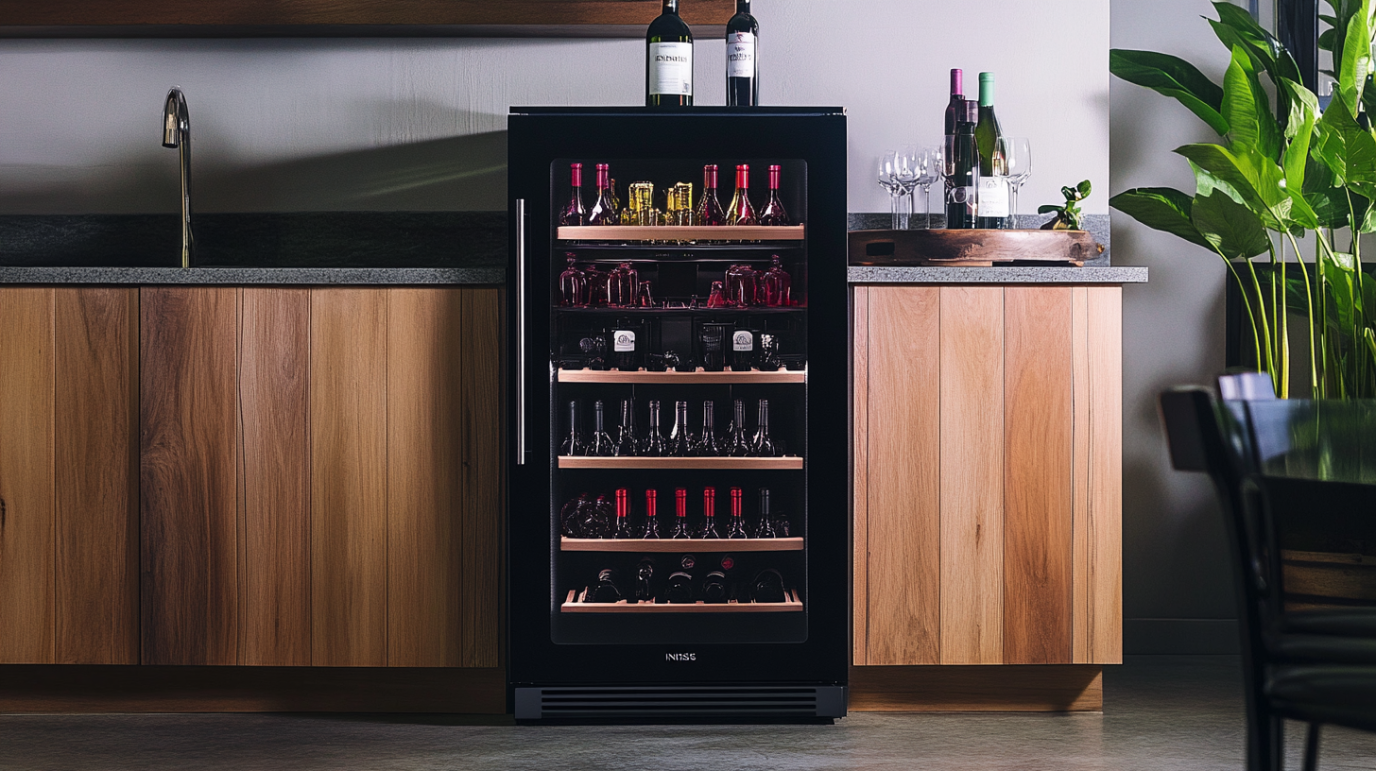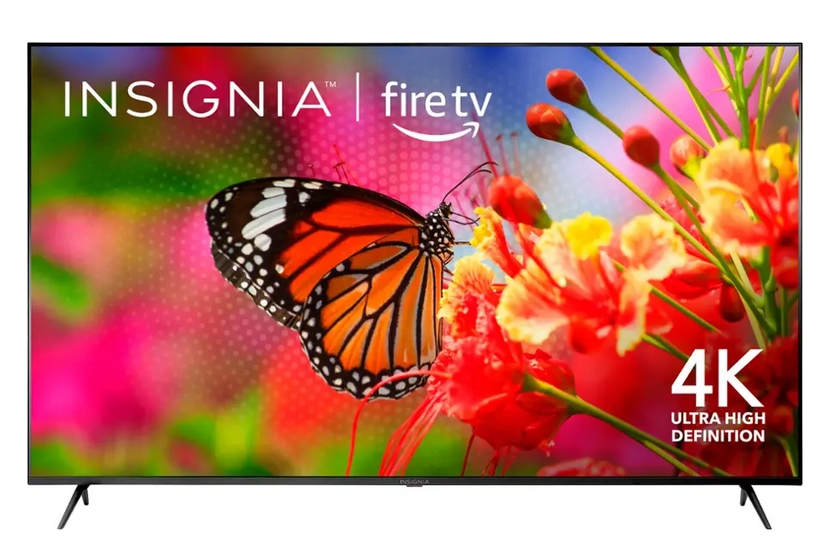
Insignia™ – 75″ Class F50 Series LED 4K UHD Smart Fire TV
- 4K Ultra HD (2160p resolution)
- Enjoy breathtaking HDR10 4K movies and TV shows at 4 times the resolution of Full HD, and upscale your current content to Ultra HD-level picture quality.
- High Dynamic Range
- Provides a wide range of color details and sharper contrast, from the brightest whites to the deepest blacks.
- Alexa voice control
- The Alexa Voice Remote lets you easily control your entertainment, search across apps, switch inputs, and more using just your voice. Press and hold the voice button and ask Alexa to easily find, launch, and control content, and even switch to cable.
- Access thousands of shows with Fire TV
- Watch over 500,000 streaming movies and TV episodes with access to thousands of channels, apps and Alexa skills, including Apple TV+, Disney+, Hulu, Netflix, Prime Video, Sling TV, YouTube and other services right from this TV.*
- DTS Studio Sound
- This premium audio enhancement suite creates realistic and immersive audio with two-speaker playback that expands your sense of space and ambience.
- Supports HDMI ARC and HDMI eARC
- Sends audio directly from the HDMI jack to a compatible soundbar or AV receiver, removing the need for an extra cable.
$429.99
How I Found the Perfect Balance of Size, Features, and Value for My Living Room
I never thought I’d be the guy with a 75-inch TV dominating my living room wall. Yet here I am, typing this while occasionally glancing up at the massive screen that has transformed my home entertainment experience over the past three months. The decision to upgrade wasn’t made lightly—I researched for weeks, visited multiple stores, and read countless reviews before taking the plunge. Now that I’ve lived with my Insignia 75-inch TV through movie nights, gaming sessions, and weekend sports marathons, I want to share everything I’ve learned about this surprisingly affordable giant.
If you’re considering a large-screen TV without emptying your savings account, the Insignia 75-inch TV deserves your serious consideration.
The Decision to Go Big
Let me take you back to where this journey began. My trusty 55-inch Samsung had served me well for nearly seven years, but after visiting a friend’s home theater setup with a 75-inch display, I couldn’t shake the feeling that I was missing out. The immersive experience of that larger screen stuck with me, but so did the sticker shock when I started browsing premium brands online.
That’s when I stumbled upon the Insignia option while browsing Best Buy’s website during a late-night research session. The price immediately caught my attention—less than half what I’d been seeing for Sony and Samsung models of the same size. My first thought? “What’s the catch?” This skepticism led me down a rabbit hole of research that ultimately culminated in what I consider one of my smartest purchases in recent memory.
Unpacking the Insignia Brand
Before diving into the specifics of the 75-inch model, let’s address the elephant in the room: Insignia is Best Buy’s house brand. Many shoppers (myself included, initially) approach house brands with caution, assuming they’re inferior to the big names in electronics. After all, how could a TV costing so much less deliver comparable performance?
The truth, as I’ve discovered, is more nuanced. Insignia TVs are manufactured by reliable OEMs (Original Equipment Manufacturers) that also produce components for those bigger brands. While they may not have all the cutting-edge features of premium models, they focus on delivering solid core performance at a fraction of the cost.
In the case of the 75-inch model, this means you’re getting a massive 4K panel with smart TV functionality without paying for the brand prestige of Samsung, LG, or Sony. For many viewers—especially those who aren’t hardcore videophiles—the differences in everyday viewing are surprisingly minimal.
Features That Matter: What You Get with the Insignia 75-Inch TV
Resolution and Picture Quality
The first question on everyone’s mind: How does it actually look? I’m pleased to report that the 4K Ultra HD resolution (3840 x 2160) delivers impressively crisp, detailed images that pop with clarity. Whether I’m watching nature documentaries that showcase vibrant wildlife or action movies with complex dark scenes, the picture quality consistently exceeds my expectations.
The TV supports HDR (High Dynamic Range), specifically HDR10, which enhances contrast and color accuracy. While it doesn’t offer Dolby Vision support like some premium models, the HDR10 capability still provides noticeably better highlights and shadow details compared to standard displays. When streaming HDR content from Netflix or Disney+, the difference is immediately apparent in scenes with bright sunlight or dramatic lighting.
What surprised me most was how well it handles upscaling. Most of the content we watch isn’t native 4K, so the TV’s ability to enhance lower-resolution sources matters tremendously. The Insignia does an admirable job here, making even older shows from streaming services look better than they did on my previous TV.
Smart TV Platform: Fire TV Integration
One of the standout features of this Insignia model is the built-in Fire TV experience. Rather than developing their own smart TV interface (which often results in clunky, under-supported platforms), Insignia partnered with Amazon to integrate the full Fire TV system.
This decision pays dividends in daily use. The interface is responsive, intuitive, and regularly updated with new features. All major streaming services are represented—Netflix, Hulu, Disney+, HBO Max, Apple TV+, and of course, Prime Video—and app performance is smooth across the board.
The home screen is customizable, allowing me to place my favorite apps front and center. The system remembers what I’ve been watching and offers relevant recommendations, which has actually led me to discover several shows I might have otherwise missed.
Voice control via Alexa is integrated seamlessly. The included voice remote lets me search for content, control playback, check the weather, and even control compatible smart home devices without reaching for my phone. I’ve found myself using voice commands far more often than I expected, especially when searching for specific titles across multiple streaming services.
Connectivity Options
For a budget-friendly TV, the Insignia offers an impressive array of connectivity options. Here’s what you’ll find on the back panel:
- 3 HDMI ports (one with ARC support for soundbar connection)
- 1 USB port
- Optical digital audio output
- Composite video input
- Ethernet port
- RF antenna input
- Headphone jack
The three HDMI inputs have proven sufficient for my setup (cable box, PlayStation 5, and soundbar), though households with more devices might need to consider an HDMI switcher. The HDMI ports support HDMI 2.0 specifications, which allows for 4K content at 60Hz—perfectly adequate for most streaming and gaming needs, though not the latest HDMI 2.1 standard required for 4K at 120Hz.
Wireless connectivity includes both Wi-Fi (802.11ac dual-band) and Bluetooth, the latter being particularly useful for connecting wireless headphones for late-night viewing without disturbing others.
Audio Performance
Let’s be honest: built-in TV speakers are rarely impressive, especially in thinner modern designs. The Insignia’s integrated speakers deliver clear dialogue and decent volume levels, but as with virtually any flat-panel TV, they lack meaningful bass response and soundstage width.
For casual news watching and some TV shows, the built-in sound is acceptable. However, I quickly connected a soundbar (via the HDMI ARC port) to enhance the audio experience for movies and gaming. If you’re investing in a 75-inch screen, budgeting for at least a basic soundbar is highly recommended to match the visual impact with appropriate audio.
Design and Build Quality
While the Insignia won’t win any design awards, its appearance is pleasantly understated. The bezels are relatively thin for a budget TV, and the overall construction feels more substantial than I expected. The included stand consists of two feet positioned toward the outer edges of the screen, providing stable support but requiring a fairly wide TV stand (mine is 65 inches wide and accommodates it with just a few inches to spare on each side).
At this size, however, many owners (myself included) opt for wall mounting. The TV supports standard VESA mounting patterns (400x300mm), making it compatible with most TV wall mounts rated for 75-inch displays. When wall-mounted, the TV sits about 3.2 inches from the wall, creating a clean, streamlined look.
The dimensions are worth noting for planning purposes:
- Without stand: 66.3″ W × 38.1″ H × 3.5″ D
- With stand: 66.3″ W × 40.5″ H × 14.1″ D
- Weight: Approximately 58 pounds without stand
Real-World Performance: How It Handles Different Content
Streaming Content
For most households, streaming services have become the primary source of entertainment, so performance here matters tremendously. The Insignia handles popular streaming platforms with aplomb, loading content quickly and maintaining stable playback even with my somewhat finicky internet connection.
Netflix 4K content like “Our Planet” showcases the TV’s ability to render fine details and natural colors. The forests, oceans, and wildlife appear stunningly lifelike. Similarly, the vibrant production design of shows like “The Marvelous Mrs. Maisel” on Prime Video pops with accurate, saturated colors that never appear overprocessed.
One technical note: to stream 4K content, you’ll need a relatively robust internet connection (at least 25 Mbps is recommended) and subscriptions to the premium tiers of services that offer 4K content.
Cable/Broadcast TV
For traditional TV viewing through a cable box or antenna, the experience is equally satisfying. Sports broadcasts look particularly impressive on the large screen, making you feel closer to the action. The TV’s motion handling is adequate for most sports, though very fast action (like hockey or certain camera pans in football) can exhibit some motion blur—a common limitation of 60Hz panels.
News programs and talk shows look crisp and clean, with text overlays appearing sharp and readable from across the room. Local HD channels through an antenna come through with impressive clarity, often rivaling cable quality.
Gaming Experience
As a casual gamer who occasionally dives into weekend-long sessions, I was particularly curious about how the Insignia would perform with my PlayStation 5. The verdict? Better than expected, with some limitations to be aware of.
The good news first: input lag in Game Mode is respectable at around 16ms, which provides responsive control for most gaming scenarios. Visual quality is excellent, with games like “Horizon Forbidden West” and “Spider-Man: Miles Morales” looking stunning on the large 4K display.
The limitations stem primarily from the 60Hz refresh rate and lack of HDMI 2.1 features like Variable Refresh Rate (VRR) and Auto Low Latency Mode (ALLM). This means the TV cannot display games at 120Hz, even if your console supports it. For competitive gamers, this might be a dealbreaker, but for casual gaming and single-player experiences, the performance is more than satisfactory.
Movie Night Performance
Movie nights have been transformed by the 75-inch screen. The Insignia delivers a surprisingly cinema-like experience, especially with the lights dimmed and a decent sound system connected. 4K Blu-rays display with exceptional clarity and depth, showcasing the TV’s ability to handle the highest quality sources.
The TV’s handling of darker scenes deserves special mention. While it doesn’t match the perfect blacks of OLED displays, it performs admirably for an LED-backlit TV in this price range. During a recent viewing of “Dune,” the shadowy interiors retained good detail without excessive crushing of blacks or noticeable backlight blooming.
Pricing and Value Proposition
Now for what might be the most compelling aspect of this TV: the price. The Insignia 75-inch Fire TV edition typically retails between $549-$699, with frequent sales pushing it closer to (or even below) the $500 mark during major shopping events like Black Friday, Prime Day, or Best Buy’s periodic promotions.
For context, comparable 75-inch models from major brands often start at $900-$1,200 for entry-level options and can easily exceed $2,000 for premium models with advanced features. This price differential represents significant savings that could be allocated to other aspects of your home entertainment setup, like a quality soundbar or streaming subscriptions.
Is the saving worth any compromise in quality? Based on my experience, for most viewers, absolutely. The value-to-performance ratio is exceptional, especially if your viewing habits center around streaming services, casual gaming, and general TV watching rather than critical home theater applications.
Where to Buy and Current Promotions
As Best Buy’s house brand, the primary retailer for Insignia TVs is, unsurprisingly, Best Buy. Their physical stores usually have display models you can evaluate in person—something I’d highly recommend for any TV purchase, but especially for screens of this size where dimensions and picture quality can be difficult to judge online.
Best Buy frequently offers free delivery for large TVs, which is a significant convenience given the size and weight of a 75-inch model. They also offer optional professional installation services that include wall mounting and basic setup.
Amazon also carries Insignia Fire TV models, often at comparable pricing to Best Buy, with the usual benefits of Prime shipping where available. However, return policies for large TVs can be more complicated through online retailers, so read the fine print carefully.
At the time of writing, several promotions are available:
- Best Buy frequently offers $50-150 gift cards with purchase
- Extended warranty promotions offering discounted 5-year coverage
- Bundle deals when purchased with compatible soundbars
- Trade-in credits for your old TV (varies by condition and model)
Regardless of where you purchase, I strongly recommend checking both retailers’ websites for current pricing, as TV deals fluctuate frequently.
Setup and Installation: What to Expect
Setting up a 75-inch TV is definitely a two-person job, and the Insignia is no exception. The unboxing process requires careful planning and ample space. The packaging is well-designed, with clear instructions and adequate protective materials.
If you’re using the included stand, assembly is straightforward, requiring just a Phillips-head screwdriver and about 15 minutes of time. Wall mounting is more involved but follows standard VESA mounting procedures.
Once physically positioned, the initial setup process is impressively streamlined:
- Power on and select your language
- Connect to your home Wi-Fi network
- Sign in to your Amazon account (or create one)
- Select streaming services to install
- Connect external devices
The entire software setup takes about 15-20 minutes, with on-screen instructions guiding you through each step. One particularly nice touch is the automatic detection of devices connected via HDMI, which the system labels appropriately (though you can customize these labels later).
The Fire TV interface will guide you through downloading your preferred streaming apps and logging into each service. If you’re already an Amazon customer, many of your preferences and subscriptions will carry over automatically.
Living with the Insignia: Long-Term Impressions
After three months of daily use, I’ve developed a more nuanced understanding of the TV’s strengths and limitations. Here are some observations that might not be apparent from specifications or short-term testing:
The Remote Control Experience
The included Alexa Voice Remote is a significant upgrade from basic TV remotes. Beyond the voice control capabilities, the button layout is intuitive, and the build quality feels substantial. The voice button is positioned conveniently under your thumb, encouraging regular use.
One minor annoyance: the remote lacks backlighting, making it challenging to use in darkened rooms during movie nights. I’ve addressed this by using the Fire TV smartphone app as a backup remote when needed.
Software Updates and Support
Insignia has been surprisingly diligent with software updates. In three months, I’ve received two significant updates that improved system stability and added minor features. The integration with Amazon’s Fire TV ecosystem means you benefit from Amazon’s ongoing platform development rather than relying solely on Insignia’s support.
The most recent update improved the content recommendation algorithm noticeably and added support for Apple AirPlay, which wasn’t available when I first purchased the TV.
Energy Efficiency
Large TVs can be energy hogs, but the Insignia performs reasonably well in this regard. According to the Energy Guide label, estimated yearly electricity use is around $36 based on average usage patterns. I’ve noticed no significant impact on my electric bill since upgrading from my previous 55-inch model.
The TV offers several energy-saving settings that can reduce power consumption further, though they do affect brightness levels. I’ve found the “Medium” energy saving setting strikes a good balance between power efficiency and picture quality for daytime viewing.
Screen Uniformity and Viewing Angles
No LED TV is perfect when it comes to screen uniformity, and the Insignia does exhibit some minor issues typical of its price class. During very dark scenes with uniform color (like credits on a black background), some subtle vignetting is visible at the corners—darker edges compared to the center of the screen.
Viewing angles are adequate but not exceptional. Colors remain accurate within about 30-35 degrees off-center, with gradual diminishing quality beyond that point. For most living room arrangements where viewers are seated relatively centered to the screen, this poses no significant problems.
Comparing to the Competition: How Does It Stack Up?
To provide proper context for the Insignia’s performance, I visited several electronics stores to directly compare it with competing models in the 75-inch category. Here’s how it measures up against various price tiers:
Budget Tier Comparison (Under $700)
Among budget 75-inch options, the Insignia holds its own against competitors like TCL’s 4-Series and Hisense’s A6 Series. Picture quality is comparable across these models, with slight variations in color accuracy and processing capabilities.
The Insignia’s main advantage in this tier is the Fire TV integration, which provides a more refined and regularly updated smart platform than many competitors’ proprietary systems. TCL’s Roku models offer similarly strong smart features, though the interface aesthetics and content discovery differ significantly.
Mid-Range Comparison ($700-1200)
Stepping up to mid-range options like Samsung’s 7 Series or TCL’s 5-Series QLED reveals more significant differences. These TVs typically offer better brightness, more advanced local dimming for improved contrast, and more sophisticated color technologies like quantum dots.
For bright, sunlit rooms or viewers particularly sensitive to HDR performance, these mid-range options do provide noticeable improvements over the Insignia. However, for standard viewing in normally lit rooms, the gap narrows considerably, making the Insignia’s value proposition quite compelling.
Premium Features Missing from the Insignia
To make an informed decision, it’s important to understand what premium features you’re foregoing with the budget-friendly Insignia:
- 120Hz refresh rate: The Insignia operates at 60Hz, while premium models offer 120Hz for smoother motion.
- Advanced gaming features: No Variable Refresh Rate (VRR) or Auto Low Latency Mode (ALLM).
- Dolby Vision HDR: The TV supports HDR10 but not the more dynamic Dolby Vision format.
- Local dimming zones: Limited dimming capabilities compared to higher-end models.
- Peak brightness: Tops out around 350 nits versus 1000+ on premium models.
- HDMI 2.1: Limited to HDMI 2.0 specifications.
Whether these omissions matter depends entirely on your specific needs and viewing habits. For many viewers—myself included—these trade-offs are acceptable given the substantial cost savings.
Practical Tips for Potential Buyers
If you’re seriously considering the Insignia 75-inch TV, here are some practical recommendations based on my experience:
Optimal Viewing Distance
For a 75-inch 4K TV, the ideal viewing distance is approximately 7.5-10 feet. Sitting closer allows you to appreciate the 4K detail but may make it difficult to take in the entire screen without eye movement. Sitting farther than 15 feet diminishes the impact of both the screen size and the 4K resolution.
I positioned my sofa approximately 9 feet from the screen, which creates an immersive experience without feeling overwhelming.
Picture Settings Recommendations
Out of the box, the Insignia’s picture settings aren’t optimized for best quality. I recommend making these adjustments for improved performance:
For general viewing:
- Picture Mode: Movie (most accurate colors)
- Backlight: 85% (adjust based on room brightness)
- Contrast: 90
- Brightness: 50
- Color: 48 (slightly reduced from default)
- Sharpness: 15 (lower than default to avoid artificial edge enhancement)
- Color Temperature: Warm
For gaming:
- Picture Mode: Game
- Reduce sharpness to 15-20
- Disable noise reduction features
These settings provide a good starting point, though personal preference should ultimately guide your choices.
Worthwhile Accessories
Consider these additions to maximize your experience:
- Wall mount: The size makes wall mounting particularly attractive for clean installation.
- Soundbar with subwoofer: Dramatically improves the audio experience to match the visual impact.
- Bias lighting: LED strips behind the TV reduce eye strain during dark-room viewing.
- Streaming device: While not necessary given the built-in Fire TV, external devices like Apple TV or NVIDIA Shield offer enhanced performance for specific use cases.
- HDMI switch: If you have more than three HDMI devices to connect.
Warranty and Reliability Considerations
Insignia TVs come with a standard one-year limited warranty covering manufacturing defects. Best Buy frequently offers extended warranty plans ranging from 2-5 years for additional cost (typically $79-129 depending on coverage length).
Is the extended warranty worth it? For large TVs, I personally find the peace of mind valuable. Repairs for modern flat panels are often costly enough that a single incident can exceed the warranty price. I opted for the 3-year plan for $99, which also covers power surge damage and includes one free bulb replacement (though LED TVs don’t have traditional bulbs, this applies to the backlighting system).
Based on my research into reliability data, Insignia TVs have average to slightly above-average reliability compared to other budget brands. The primary issues reported in user reviews tend to involve software glitches (often resolved through updates) rather than hardware failures.
Final Verdict: Is the Insignia 75-Inch TV Right for You?
After living with this TV for three months and thoroughly researching its capabilities, I can confidently recommend the Insignia 75-inch Fire TV for certain types of viewers:
It’s an excellent choice if:
- You want maximum screen size for your budget
- Your viewing primarily consists of streaming content, cable TV, and casual gaming
- You appreciate the Fire TV ecosystem and Alexa integration
- You’re upgrading from an older or smaller TV and want significant improvement without premium pricing
- Your viewing environment has controllable lighting (not extremely bright)
Consider alternatives if:
- You’re a competitive gamer needing 120Hz and advanced gaming features
- Your room has uncontrolled bright sunlight requiring exceptionally high brightness
- You’re a cinephile demanding the absolute best HDR performance
- You require the latest connectivity standards like HDMI 2.1
For my own needs—a mix of streaming shows, weekend movies, casual gaming, and sports watching—the Insignia has proven to be an outstanding value. The massive screen size transforms the viewing experience in a way that incremental improvements in picture quality alone cannot match.
Sometimes the smart purchase isn’t about getting every cutting-edge feature but about identifying which features actually impact your day-to-day enjoyment. The Insignia 75-inch TV may lack some premium specifications, but it delivers where it counts: providing an immersive, large-screen experience at a price point that makes it accessible to far more households.
If you’ve been hesitating about making the jump to a truly large screen because of budget concerns, the Insignia 75-inch TV might be exactly the solution you’ve been waiting for. Just be prepared for friends and family to suddenly find your living room the preferred destination for movie nights and big game gatherings!

